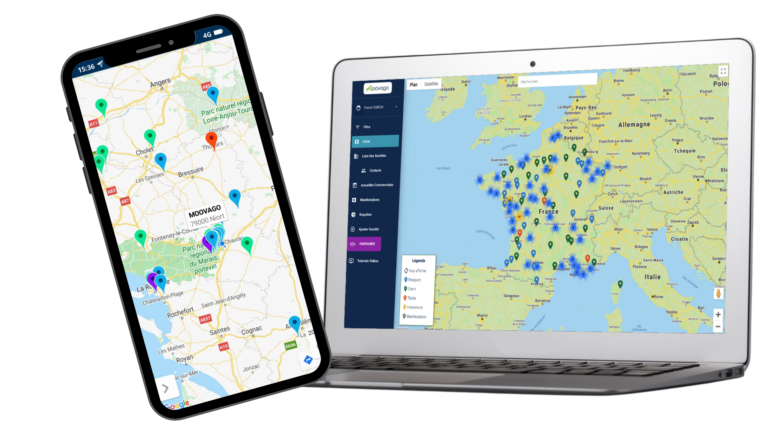What's a prospecting card?
A prospecting map consists in finding the most optimized route and appointments. It’s an important process for all travelling salespeople. A good prospecting map enables sales reps to address opportunities at the right time.
Drawing up a prospecting map is an essential part of a successful sales strategy for traveling salespeople.
It’s a complex process, but with the right planning and application, sales teams and independent sales representatives can make the most of every day in the field.
What is the purpose and usefulness of a prospecting card?
Whatever the market or sector, travelling sales representatives generally encounter the same problems:
- The difference between reality and the information entered in the customer portfolio, leading to poor exchanges in the field.
- A change in the methods and technologies used by prospects and customers, leading to a misunderstanding of needs and a loss of opportunities.
- Gaps in the timetable, unforeseen events on the road and tools that are too inflexible to allow a full day’s work.
Advance route planning, which can be flexible according to traffic, customers to be visited and weather conditions, for example, will enable traveling sales representatives to be effective even during periods of change.
How do I make a prospecting card?
You need to rely on technology. For example, consider an Excel file, maps for manual route planning, or round optimization software.
However, having a good prospecting plan planning tool for yourself and your team can save time and optimize customer follow-up.
Use a contact management system :
Managing your contacts is the basis of a good prospecting card. You can either use an Excel file or a
Map your customers:
To be effective, you need to know where your customers are. You need to use a mapping tool to put them on a map so you can have a visual view of where your contacts are. You can use Google Maps points of interest, or use an application like Moovago to keep track of your customers’ locations.

Sort your contacts:
In your contact portfolio, you need to determine the factors that will determine which contacts to prioritize. For example, those who bring you the highest sales revenue, or those you haven’t seen in a long time. You’ll need to plan your round around these priority contacts. Using your mapping tool, identify the contacts you can visit in the same area, and fill in the time between appointments by visiting other, lower-priority contacts or by prospecting. Try to carry out continuous prospecting while paying attention to your existing customers.
Keep your customer portfolio up to date:
Once you’ve completed your round, make sure you keep the information in your Excel file or customer portfolio application up to date. It’s essential to have all your information up to date, so you can analyze the situation and plan future rounds. You can also note when people you’ve seen have told you to come back or call them back.
A prospecting map should focus on the most important opportunities. The salesperson makes his or her rounds, meeting with customers and prospects. If a customer happens to be unavailable, he can use this time to visit another customer or do some prospecting. Every interaction and important piece of information should be noted and retained to facilitate sales follow-up.
Which is the best prospecting card software / application?
We recommend the Moovago application. It’s an application designed for travelling sales reps, enabling you to manage your customer portfolio visually, using a map.

You’ll be able to create and optimize routes directly in the cloud-based application. What’s more, the French application brings together all the tools used by sales reps: reports, reminders, reminders, tasks, appointments and sales revenue.
Thanks to reminders, you’ll know which companies to visit, and you can also choose your route according to sales revenue opportunities.
